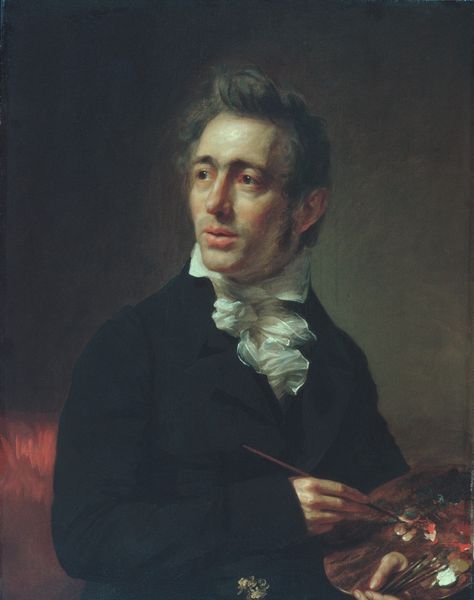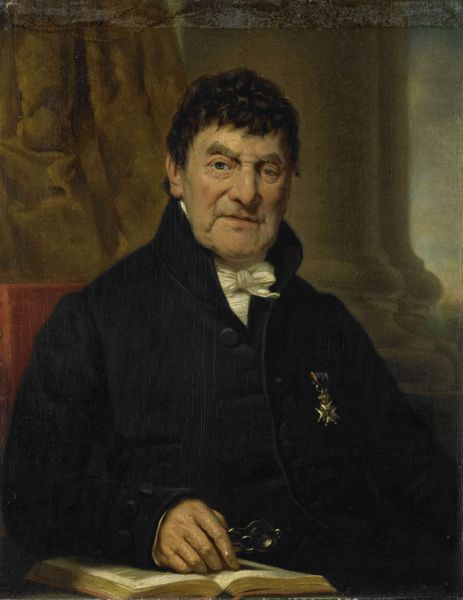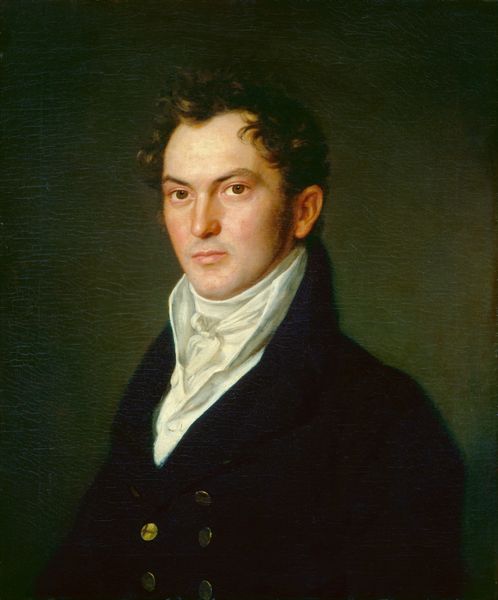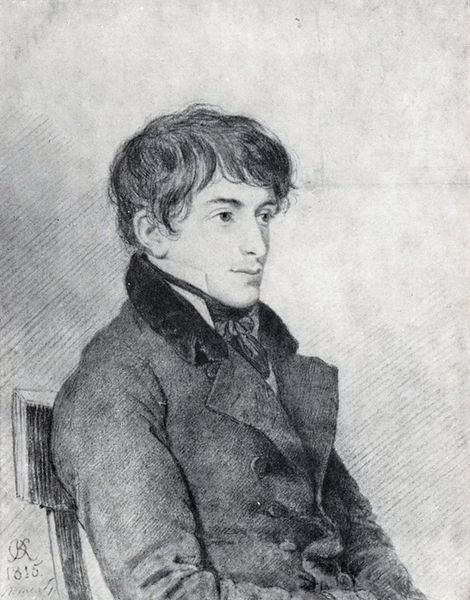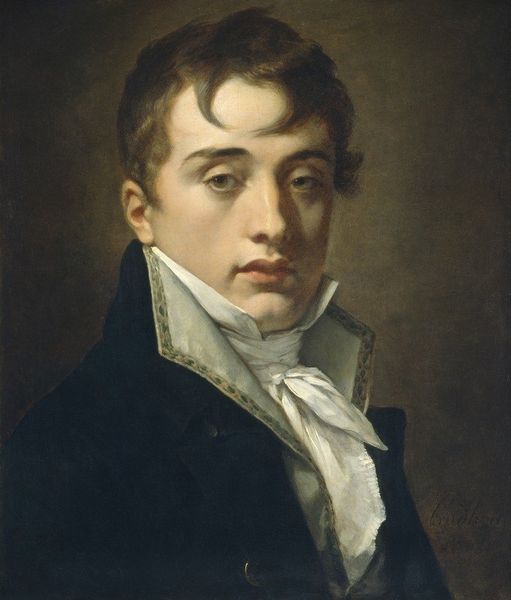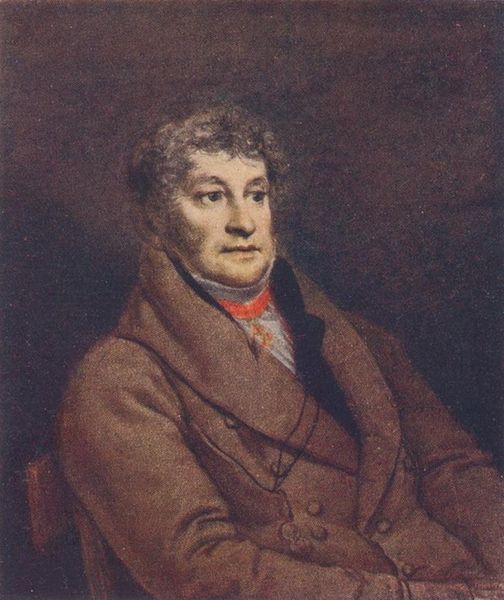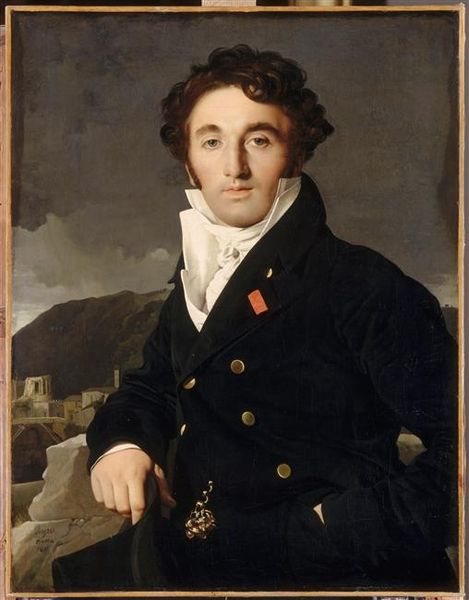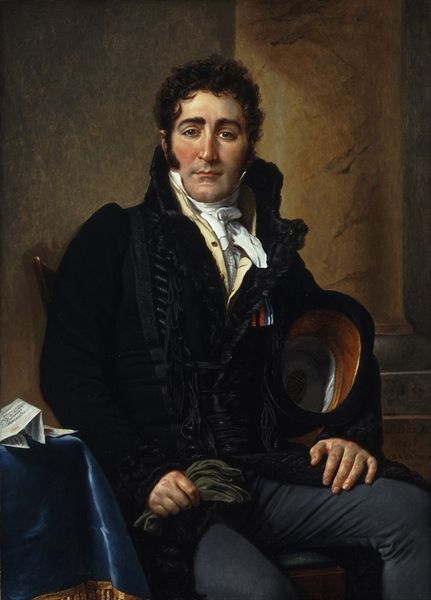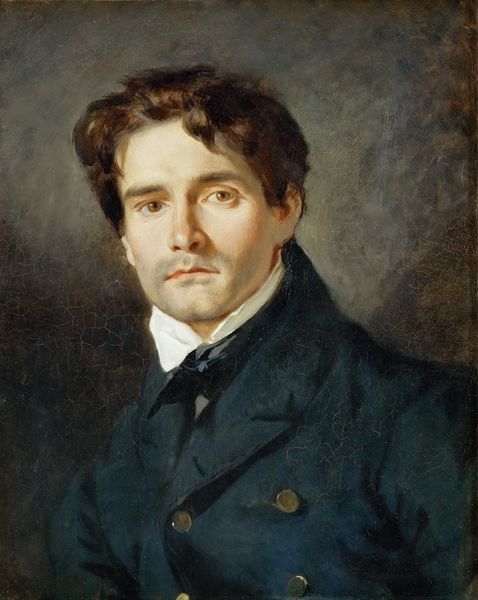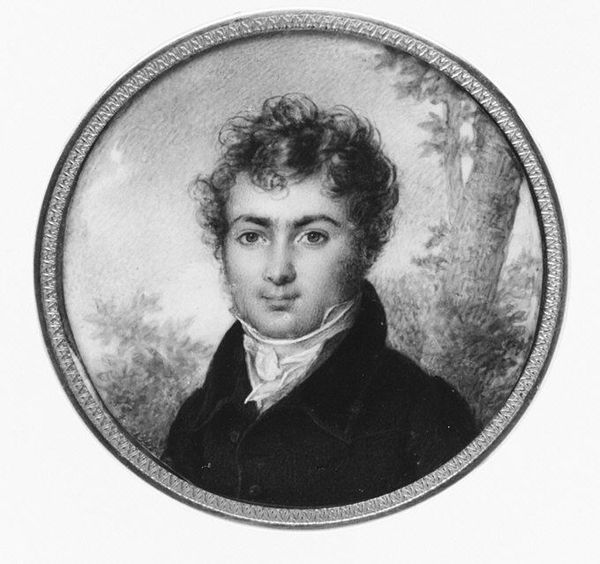
painting, oil-paint
#
portrait
#
portrait
#
painting
#
oil-paint
#
romanticism
#
history-painting
#
realism
Copyright: Public Domain: Artvee
Editor: This is Jean-Auguste-Dominique Ingres's "Portrait de Belvèze-Foulon," an oil painting from 1805. He's dressed in dark, elegant attire, seated but turned to face us, a hint of a smirk playing on his lips. What first catches your eye when you look at this portrait? Curator: It's intriguing to consider this portrait within the social context of post-revolutionary France. While seemingly a straightforward depiction of a bourgeois man, Ingres's choice of realism, at a time when idealized portrayals were favored, feels like a subtle commentary. Editor: Commentary on what, exactly? The sitter's social standing, perhaps? Curator: Potentially. Ingres seems to be making a statement about class and representation. By foregoing romantic idealization, he captures Belvèze-Foulon with an unvarnished directness, highlighting his individuality. The dark palette might also symbolize the more subdued mood of France following the Reign of Terror. Editor: So, the lack of embellishment itself becomes a powerful form of expression, pushing against established norms. Curator: Precisely. We see Ingres subtly challenging the artistic conventions that were tools of the aristocracy before the Revolution. His commitment to representing the individual—warts and all, you might say—resonates with a broader egalitarian spirit, even if quietly. This tension between the individual and societal expectation fascinates me. What about you? Editor: I had not considered that Ingres was positioning his sitter against revolutionary expectation of presentation. The subject's understated confidence in contrast to this is striking! Curator: Absolutely! There is always more than meets the eye.
Comments
No comments
Be the first to comment and join the conversation on the ultimate creative platform.

